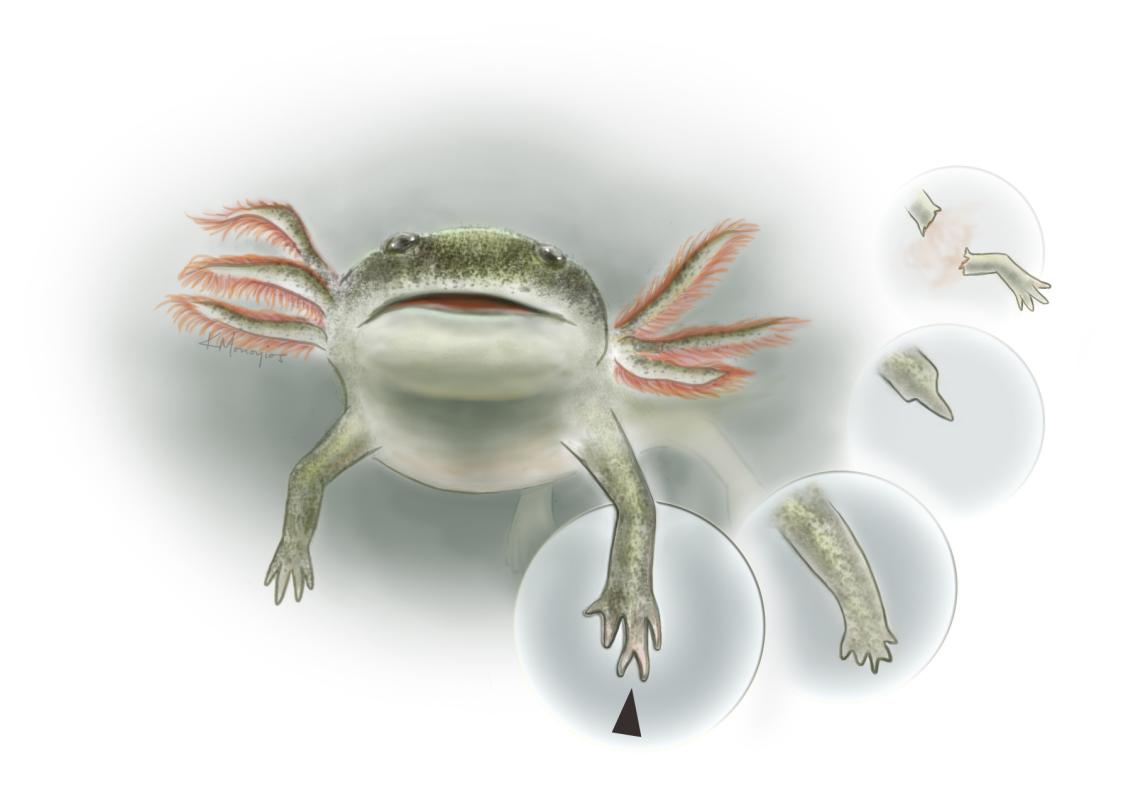A team of paleontologists at the Museum für Naturkunde Berlin demonstrates in a new study that a distant fossil relative of modern amphibians was already capable of regenerating its limbs after injury and amputation.
Among modern four legged animals (tetrapods) that also include mammals and thus us humans, only salamanders can regenerate their limbs, if necessary repeatedly and throughout their whole lifespan. Why salamanders can do this and how regeneration is initiated and coordinated is still not fully understood and subject of a large and active field of research, driven by the hope to eventually apply the findings in human medicine.
“Traditionally it was assumed that the capacity to regenerate limbs is something unique to salamanders that likely evolved rather late in their evolutionary history. The new findings in the 300 million year old fossil Micromelerpeton shows that regenerative capacity of the limbs and its genetic basis are much older than previously thought” says Dr. Nadia Fröbisch, coauthor on the study.
In fossil material of Micromelerpeton housed in the scientific collections of the
Museum für Naturkunde Berlin, the Paleontological Museum Nierstein, the State Museum of Natural History Stuttgart and the Department for Geosciences of the University of Mainz, the scientists could identify a number of abnormalities in the hands and feet of Micromelerpeton, including fusions of bony elements, bony spurs and additional or fewer fingers and toes.
„These kinds of abnormalities and their position within the hands and feet are very distinct and characteristic for abnormalities that occur in regenerated limbs of modern salamanders.
The fact that we find these abnormalities in the 300 million year old Micromelerpeton is a strong indication that the same or similar mechanisms of regeneration were already acting in this distant relative of modern amphibians“ says Dr. Constanze Bickelmann, coauthor of the study.
These new insights from the fossil record provide a new perspective on the evolution of limb regeneration and thereby also for studies on its molecular mechanisms. Thereby, it is exceptional that these clues for regeneration were preserved in the fossil record.
“Micromelerpeton is found in fossil lake deposits of the Saar-Nahe Basin in southwestern Germany, which have extraordinarily good preservational conditions for fossils. We have hundreds of specimens from these localities, which made this detailed investigation possible” explains Dr. Florian Witzmann, coauthor on the study.
Fröbisch adds “2014 is the year of the salamander, yet more and more amphibians are threatened by extinction - right now about one third of the currently known 7000 species of modern amphibians. This is particularly sad as they are extremely important for modern ecosystems and there is so much left that we can learn from them about ourselves.”
Publication: The article will be published on September 24, 2014 in the Proceedings of the Royal Society B.
